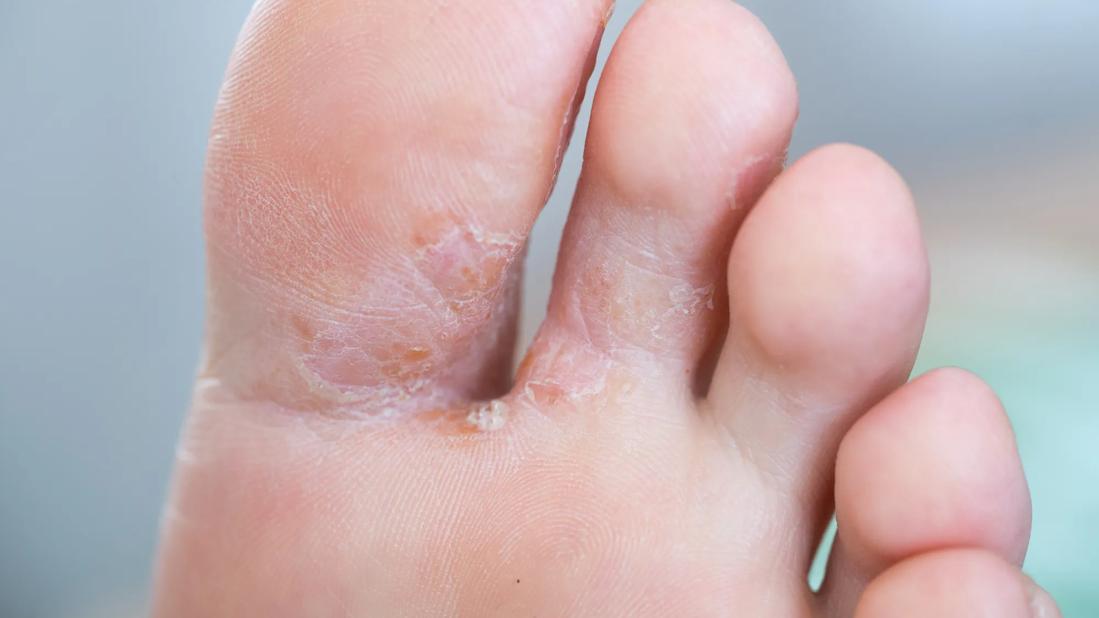Don’t Bother Using Home Remedies on Your Athlete’s Foot
Home remedies are unlikely to cure your contagious foot fungus — and they might even make it worse

It’s a shocking statistic: At any given time, 15% to 25% of the world population has an active case of athlete’s foot (also known as tinea pedis). Some people walk around for years with this fungal infection without even realizing it!
If you think you’re part of that percentage, it’s important to do something about it. And that “something” should be a trip to your local pharmacy — not a home remedy. Home remedies aren’t well studied and are unlikely to work. In some cases, they even make the problem worse.
Family medicine physician Josue Limage, MD, explains.
Do home remedies for athlete’s foot work?
There’s little evidence supporting the use of home remedies for athlete’s foot. And every day you aren’t treating your foot fungus with prescription medication is a day you risk it spreading or becoming infected. That risk goes up still higher if you have certain health conditions (more on that in a bit).
Here’s something else to keep in mind: Athlete’s foot is contagious. So, it’s not just your health you’re risking. The best and safest thing you can do is see a healthcare provider — or at least get some over-the-counter medication.
Athlete’s foot remedies to stop believing in
Foot fungus won’t just go away on its own. And using home remedies instead of proven treatments may cause more harm than good. Here are some common “quick fixes” that don’t belong on your feet:
- Hydrogen peroxide: Hydrogen peroxide used to be a staple in medicine cabinets. But it’s no longer recommended for treating most skin issues.
- Menthol products: There are several over-the-counter products that use menthol to ease the itching and discomfort that comes with athlete’s foot. But there’s not enough scientific evidence to suggest the antiseptic will kill the fungus.
- Baking soda: Putting baking soda on your feet may prevent fungi from growing. But the “how” isn’t clear. And stopping the growth is great, but that’s not the same as curing the condition. Baking soda can also dry out your skin, making you more susceptible to infections.
- Apple cider vinegar: Apple cider vinegar (ACV) is touted as a cure-all. And it does have disinfectant properties. But nobody’s really researched the effect ACV has on athlete’s foot. Here’s something we do know: The acetic acid in ACV can cause a chemical burn.
- Essential oils: Several essential oils have antiseptic properties. But there’s little science supporting their use on foot fungus. On top of that, they can be toxic to children and pets.
- Rubbing alcohol: Never apply undiluted rubbing alcohol to your foot fungus. It’ll probably hurt. And it could cause additional damage to your skin.
- Garlic: Garlic is great on bread. But don’t put it on your athlete’s foot, Dr. Limage says. “You don’t want to risk a garlic burn when there are better, safer options for addressing foot fungus.”
The best way to treat athlete’s foot — or any other fungal infection, for that matter — is to let a professional do it.
Why not to try home remedies
Still tempted to go the home remedy route? That’s your choice to make. But it’s important to know the risks.
“Using home remedies for athlete’s foot instead of treating it with medication can be risky,” Dr. Limage emphasizes. “The fungus can spread to other parts of the body, like your hands or your groin. The damaged skin might also become infected, which can be extremely serious.”
Here’s another thing to keep in mind: There are several medical conditions that make our feet more vulnerable to infection and other serious complications, like:
- Diabetes
- Conditions that leave you immunocompromised or immunosuppressed
- Circulation problems like peripheral artery disease (PAD)
- Peripheral neuropathy
If you have any of these diagnoses, opting for a home remedy is a dangerous move.
When to see a doctor
“If you think you have foot or toenail fungus, see your primary care provider or your dermatologist,” Dr. Limage advises. “There are several tests they can perform to identify exactly what’s going on — and the best treatment.”
If going to the doctor isn’t in the cards for you right now, Dr. Limage says that your next best option is an over-the-counter antifungal cream. That will help keep your athlete’s foot from spreading and keep your skin intact, reducing the risk of an infection.
“I like the creams better than the sprays or powders because the creams will completely coat the foot and treat the entire skin surface,” he explains. “Make sure that you get in between the toes because that’s really where we see the most problems — in those warm, moist areas.”
Continue using the cream for a week or so after the infection’s cleared to make sure it’s really gone and prevent reinfection. Foot fungus can be stubborn, even when you treat it with prescription medication. And it can spread. So, don’t let it get too far ahead of you.